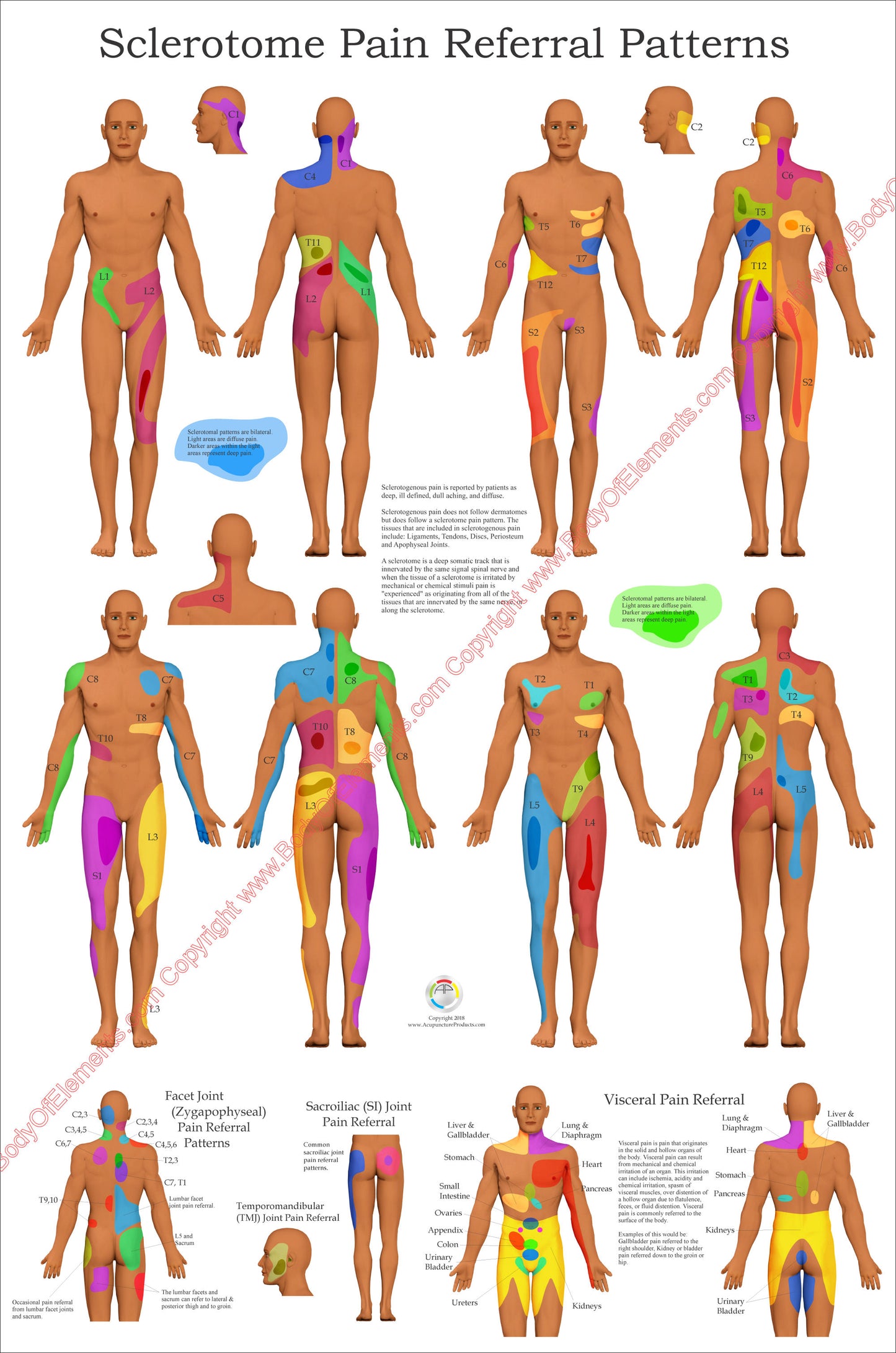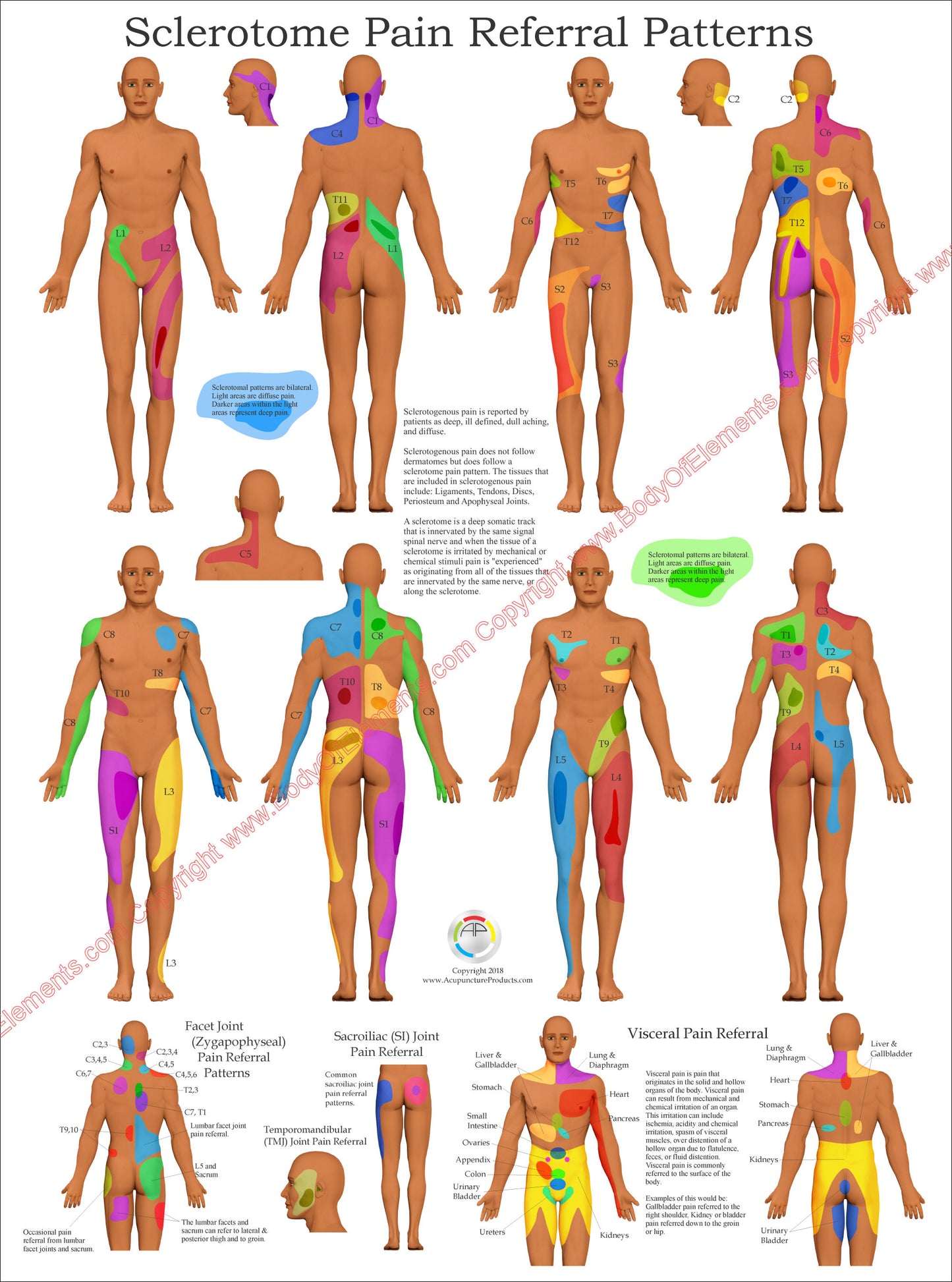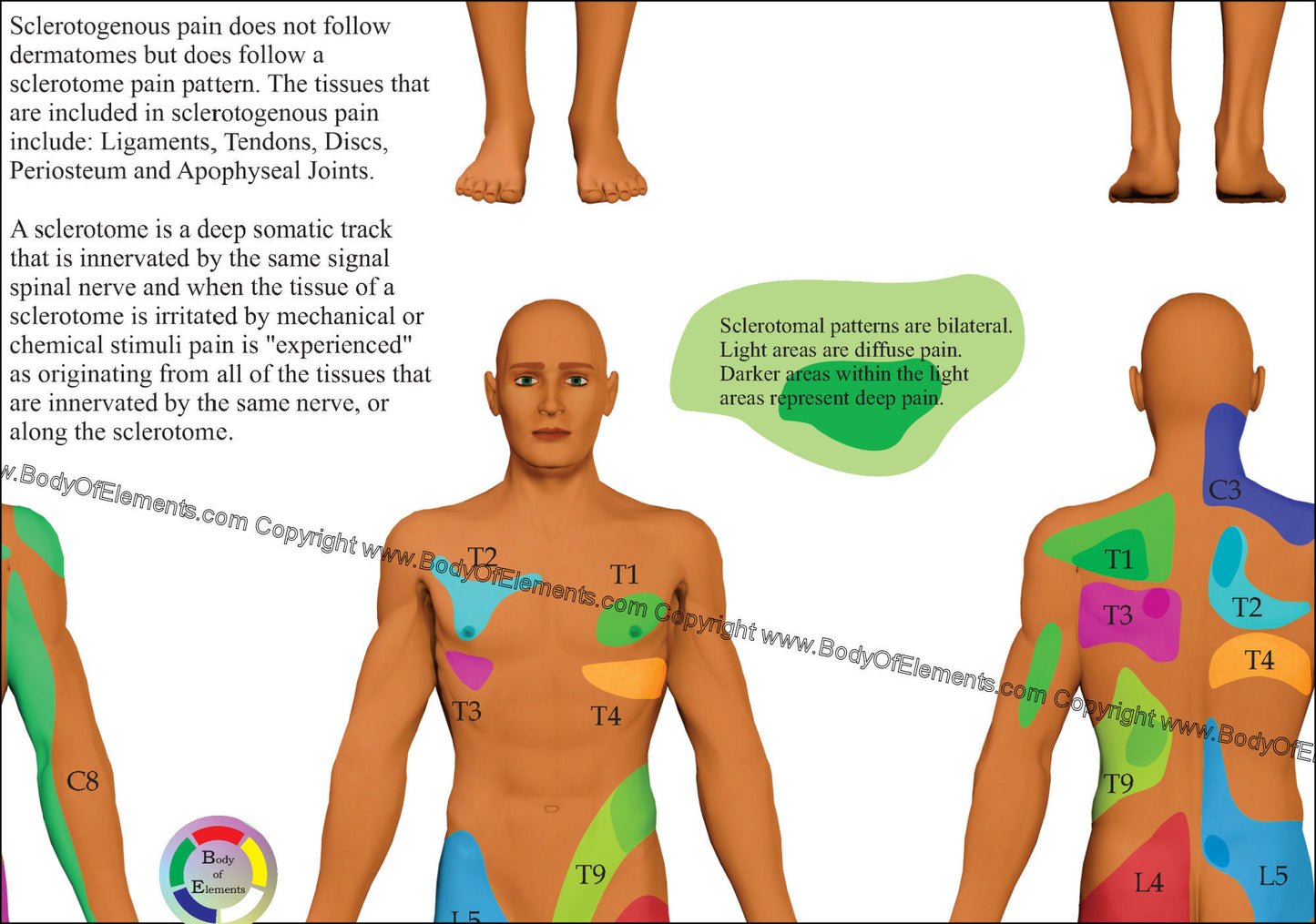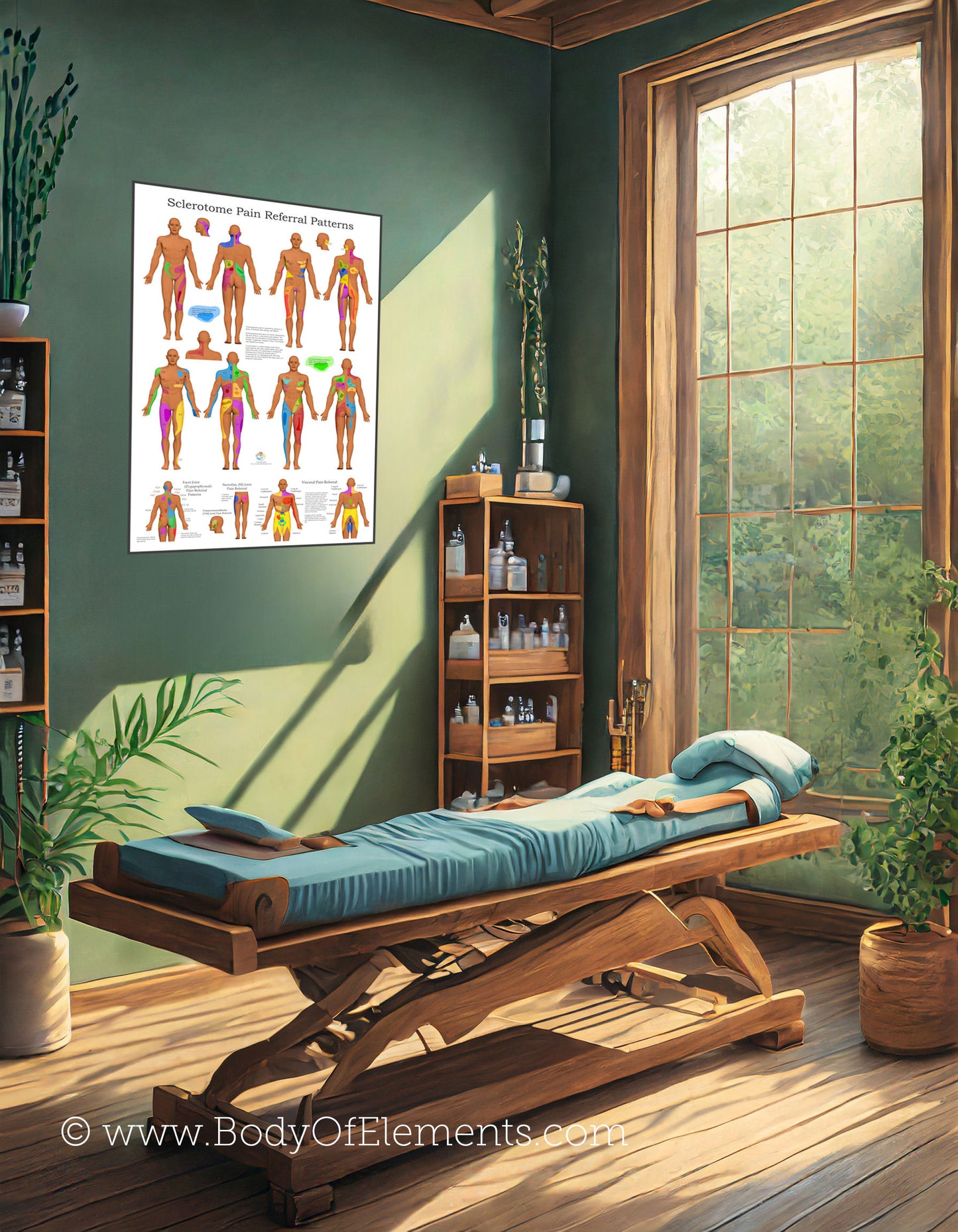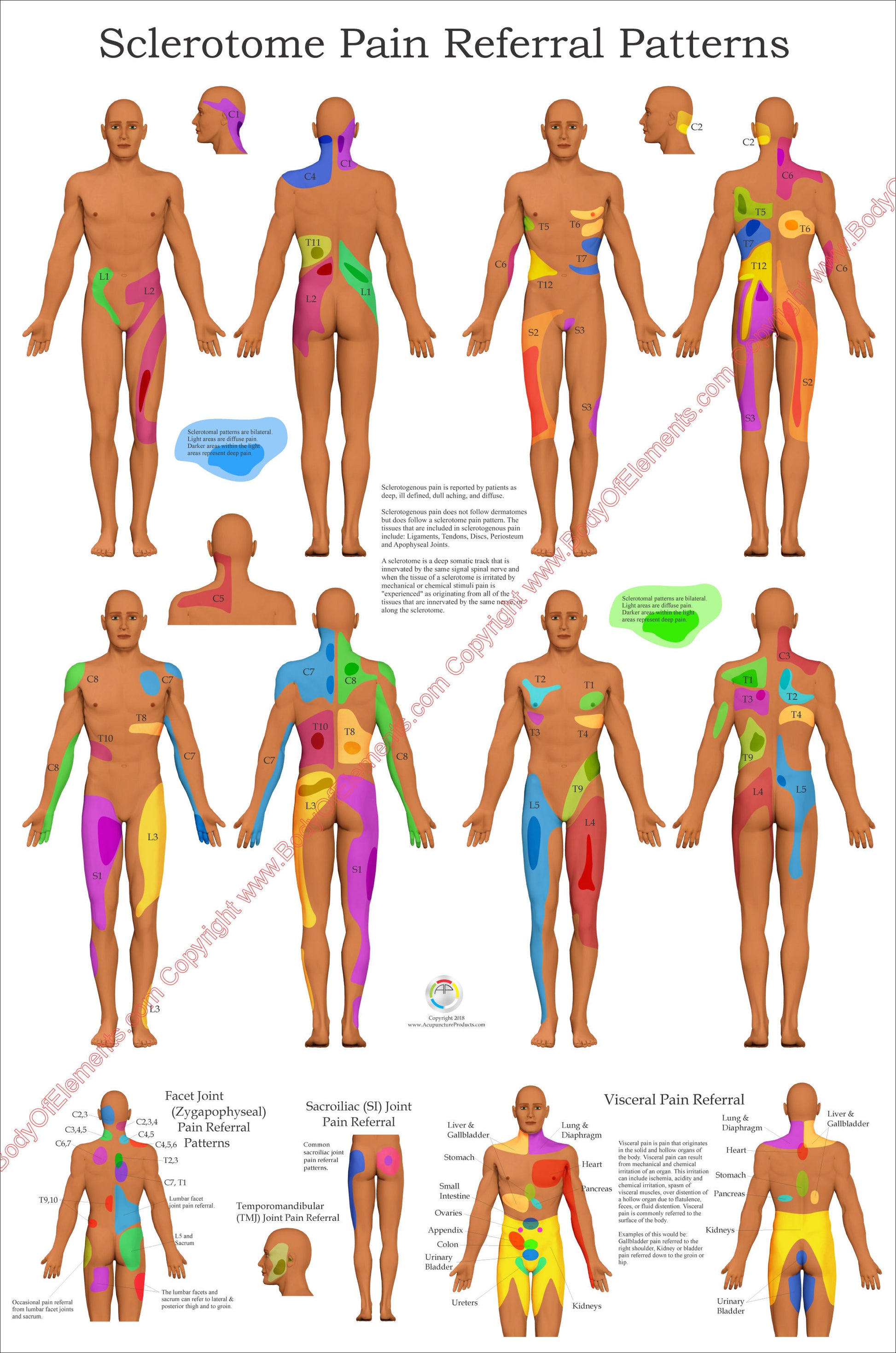- Sku: PT22010
- Vendor: Body of Elements
Sclerotome Visceral Pain Referral Poster
Color Sclerotome and Visceral Pain Referral Poster contains sclerotome pain referral from C1 to S3. Facet, sacroiliac and TMJ joint pain referral patterns.
Sclerotogenous pain is reported by patients as deep, ill defined, dull aching, and diffuse. Sclerotogenous pain does not follow dermatomes but does follow a sclerotome pain pattern. The tissues that are included in sclerotogenous pain include: Ligaments, Tendons, Discs, Periosteum and Apophyseal Joints.
A Sclerotome is a deep somatic track that is innervated by the same signal spinal nerve and when the tissue of a sclerotome is irritated by mechanical or chemical stimuli pain is "experienced" as originating from all of the tissues that are innervated by the same nerve, or along the sclerotome. Chart shows spinal levels C-1 through S-3.
Visceral Pain is pain that originates in the solid and hollow organs of the body. Visceral pain can result from mechanical and chemical irritation of an organ. This irritation can include ischemia, acidity and chemical irritation, spasm of visceral muscles, overdistention of a hollow organ due to flatulence, feces, or fluid distention. Visceral pain is commonly referred to the surface of the body. Examples of this would be: Gallbladder pain referred to the right shoulder, Kidney or bladder pain referred down to the groin or hip.
Key Features:
• Sclerotome pain referral from C1 to S3
• Color coded for deep and diffuse pain
• Visceral surface pain referrals for internal organs
• Sacroiliac joint pain referral patterns
• Facet joint pain referral patterns
Sclerotogenous pain is reported by patients as deep, ill defined, dull aching, and diffuse. Sclerotogenous pain does not follow dermatomes but does follow a sclerotome pain pattern. The tissues that are included in sclerotogenous pain include: Ligaments, Tendons, Discs, Periosteum and Apophyseal Joints.
A Sclerotome is a deep somatic track that is innervated by the same signal spinal nerve and when the tissue of a sclerotome is irritated by mechanical or chemical stimuli pain is "experienced" as originating from all of the tissues that are innervated by the same nerve, or along the sclerotome. Chart shows spinal levels C-1 through S-3.
Visceral Pain is pain that originates in the solid and hollow organs of the body. Visceral pain can result from mechanical and chemical irritation of an organ. This irritation can include ischemia, acidity and chemical irritation, spasm of visceral muscles, overdistention of a hollow organ due to flatulence, feces, or fluid distention. Visceral pain is commonly referred to the surface of the body. Examples of this would be: Gallbladder pain referred to the right shoulder, Kidney or bladder pain referred down to the groin or hip.
Key Features:
• Sclerotome pain referral from C1 to S3
• Color coded for deep and diffuse pain
• Visceral surface pain referrals for internal organs
• Sacroiliac joint pain referral patterns
• Facet joint pain referral patterns
This poster is no longer available for purchase directly from our website. You can now order it from our official Zazzle store. - Shop on Zazzle -
Have a question?
